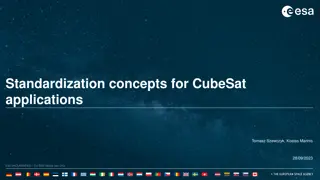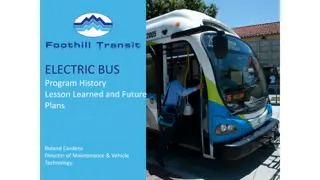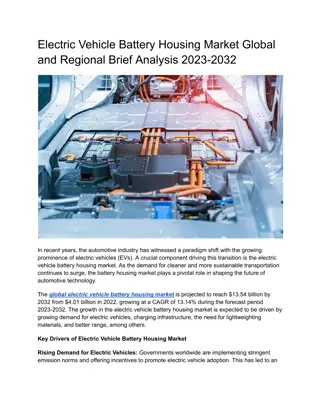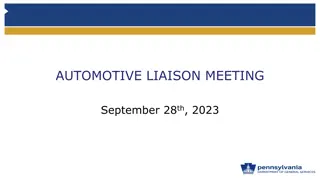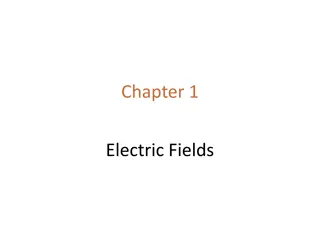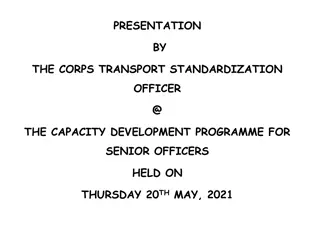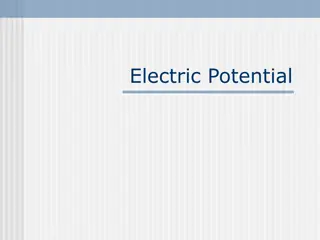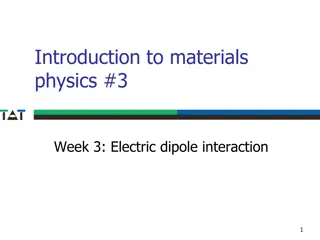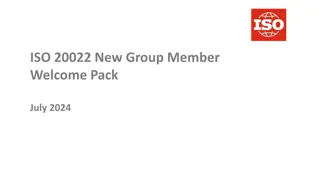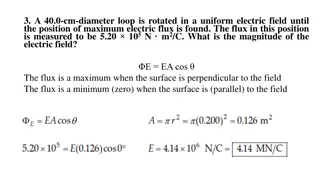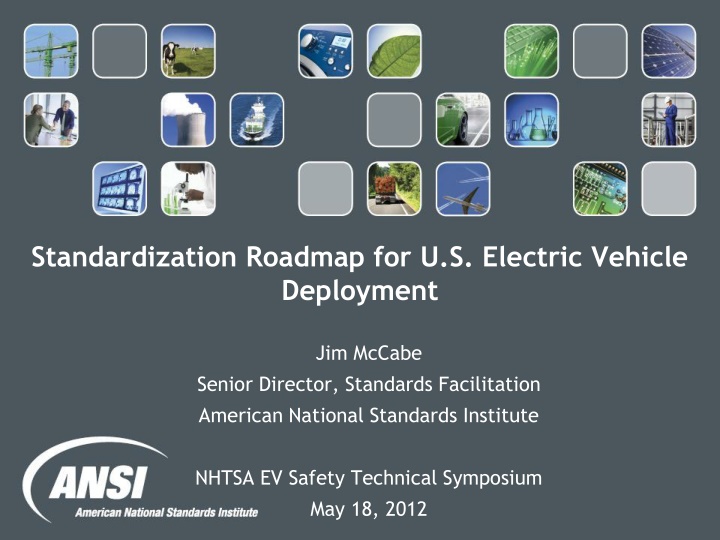
Standardization Roadmap for U.S. Electric Vehicle Deployment
The Standardization Roadmap for U.S. Electric Vehicle Deployment outlines the strategic plan developed by the American National Standards Institute (ANSI) to promote coordination and collaboration among stakeholders for the safe mass deployment of electric vehicles in the United States. The roadmap identifies existing and needed standards, prioritizes timelines, and highlights the roles of various standards developing organizations. It also emphasizes the importance of harmonization efforts to facilitate the growth of the electric vehicle market. The document includes details on the ANSI EVSP Standards Compendium and key conclusions drawn from the roadmap, offering a comprehensive overview of the standardization process in the electric vehicle industry.
Download Presentation

Please find below an Image/Link to download the presentation.
The content on the website is provided AS IS for your information and personal use only. It may not be sold, licensed, or shared on other websites without obtaining consent from the author. If you encounter any issues during the download, it is possible that the publisher has removed the file from their server.
You are allowed to download the files provided on this website for personal or commercial use, subject to the condition that they are used lawfully. All files are the property of their respective owners.
The content on the website is provided AS IS for your information and personal use only. It may not be sold, licensed, or shared on other websites without obtaining consent from the author.
E N D
Presentation Transcript
Standardization Roadmap for U.S. Electric Vehicle Deployment Jim McCabe Senior Director, Standards Facilitation American National Standards Institute NHTSA EV Safety Technical Symposium May 18, 2012
ANSI EVSP American National Standards Institute s Electric Vehicles Standards Panel (ANSI EVSP) 80 private and public sector organizations involved from automotive, utility, electrotechnical industries, standards developing organizations (SDOs), government agencies Strictly a coordinating body; it does not develop standards Mission: To foster coordination and collaboration on standardization matters among public and private sector stakeholders to enable the safe, mass deployment of electric vehicles and associated infrastructure in the U.S. with international coordination, adaptability and engagement ANSI EVSP Roadmap | NHTSA Symposium Slide 2
Roadmap Released April 2012 Standardization Roadmap for Electric Vehicles, Version 1.0 Free Download at www.ansi.org/evsp Identifies standards, codes, and regulations that exist or that are in development, gaps where new or revised standards are needed, related conformance and training programs, and harmonization efforts Includes prioritized timelines for when standardization should occur and identifies SDOs that may be able to do the work Focus is on-road plug-in EVs, both battery electric and plug-in hybrids, charging systems and associated support services for U.S. market ANSI EVSP Standards Compendium, a searchable spreadsheet of standards related to issues identified in the roadmap Slide 3 ANSI EVSP Roadmap | NHTSA Symposium
Structure ANSI EVSP Roadmap | NHTSA Symposium Slide 4
Conclusions 36 gaps or partial gaps identified 22 are near-term priorities (0-2 years) 12 are mid-term priorities (2-5 years) 2 are long-term priorities (5+ years) 16 issues where no gap identified Many SDOs (both U.S. based and non-U.S. based) produce globally relevant standards following an open, consensus-based process SAE, UL, NFPA, IEEE, ISO, IEC et al. 365 standards identified from 34 organizations Some of the existing / needed standards relating to EVs, batteries, EV charging and harmonization listed on next slides ANSI EVSP Roadmap | NHTSA Symposium Slide 5
EV Standards Terminology ISO 8713:2005, Electric road vehicles Vocabulary SAE J1715:2008, Hybrid Electric Vehicle (HEV) & Electric Vehicle (EV) Terminology; being split into two parts between SAE Hybrid and Battery Committees. Mid-term gap: Revise J1715. Power Rating Methods (in development) SAE J2907, test method/conditions for rating performance of electric propulsion motors in hybrid electric and battery electric vehicles SAE J2908, test method/conditions for rating performance of hybrid- electric and battery electric vehicle propulsion systems reflecting thermal and battery capabilities and limitations Mid-term gap: Complete J2907 and J2908. ANSI EVSP Roadmap | NHTSA Symposium Slide 6
EV Standards (contd.) Crash Tests / Safety NHTSA FMVSS 305, Electric Powered Vehicles: Electrolyte Spillage and Electrical Shock Protection. Last revised 2011. No gap. High Voltage Cables, On-Board Wiring, Component Ratings and Charging Accessories: IEC, SAE and UL standards exist. No gap. Vehicle Diagnostics Emissions: Covered by California Air Resources Board on- board diagnostic system regulations. No gap. Audible Warning Systems NHTSA safety standard in development, incorporating portions of SAEJ2889- 1, Countermeasure Performance Evaluation & Test Procedure. SAE standard is basis of ISO/NP 16254 (in development). UNECE WP.29 looking at global technical regulation (GTR) Near-term partial gap: Address EV sound emission / measurement ANSI EVSP Roadmap | NHTSA Symposium Slide 7
EV Standards (contd.) Graphical Symbols Some general IEC standards including IEC TR 60784:1984, Instrumentation For Electric Road Vehicles NHTSA FMVSS 101, Controls and Displays. Last published 2008. Near-term gap: Develop EV graphical symbols standards for parts under hood and to communicate information to driver. Develop SAE j2936, Vehicle Battery Labeling Guidelines Telematics Driver Distraction Auto Alliance Driver Focus Telematics Guidelines; NHTSA Proposed Driver Distraction Guidelines; NHTSA FMVSS 101 No gap. Fuel Efficiency, Emissions and Labeling: July 2011 EPA / NHTSA Final Rule references several SAE standards. No gap. ANSI EVSP Roadmap | NHTSA Symposium Slide 8
Battery Safety IEC 62660-2:2010, Secondary batteries for the propulsion of electric road vehicles Part 2: Reliability and abuse testing for lithium-ion cells ISO 6469-1:2009, Electric road vehicles Safety specifications Part 1: On- board rechargeable energy storage system (RESS) ISO 6469-3:2001, Electrically propelled road vehicles Safety specification Part 3: Protection of persons against electric shock ISO 12405-1:2011, Electrically propelled road vehicles Test spec for lithium- ion traction battery packs and systems Part 1: High-power applications ISO 12405-2, Electrically propelled road vehicles Test spec for lithium-ion traction battery packs and systems Part 2: High-energy applications (in development) ISO 12405-3, Electrically propelled road vehicles Test spec for lithium-ion traction battery packs and systems Part 3: Safety (in development) ANSI EVSP Roadmap | NHTSA Symposium Slide 9
Battery Safety (contd.) SAE J1766:2005, Recommended Practice for Electric and Hybrid Electric Vehicle Battery Systems Crash Integrity Testing (under revision) SAE J2464:2009, Electric and Hybrid Electric Vehicle Rechargeable Energy Storage System (RESS) Safety and Abuse Testing SAE J2929:2011, Electric and Hybrid Vehicle Propulsion Battery System Safety Standard Lithium based Rechargeable Cells (under revision) Near-term gap: Address delayed battery overheating events in J2929 Mid-term gap: Address loss of control / dual mode failure in J2929 ANSI/UL 2580:2011, Batteries for Use in Electric Vehicles NHTSA FMVSS 305, Electric Powered Vehicles: Electrolyte Spillage and Electrical Shock Protection. Last revised 2011. Movement underway by WP.29 to develop GTR on EVs w/batteries a subset ANSI EVSP Roadmap | NHTSA Symposium Slide 10
Battery Performance and Durability Testing etc. IEC standards for cell level performance testing ISO 12405-1 and -2 for pack level performance testing SAE J1798, Recommended Practice for Performance Rating of Electric Vehicle Battery Modules (in development) Mid-term gap: Complete J1798; if possible, harmonize with ISO 12405-2. UL has defined requirements and testing / certification services for batteries Long-term gaps: Standards needed for battery recycling / battery secondary uses ANSI EVSP Roadmap | NHTSA Symposium Slide 11
Battery Storage, Packaging, Transport and Handling Near-term gap: No standards address safe storage of lithium-ion batteries specifically, whether at warehouses, repair garages, recovered vehicle storage lots, auto salvage yards, or battery exchange locations Develop a standard on safe storage practices for both new and waste EV batteries including when battery separated from host vehicle. Potential Developers: SAE, NFPA, ICC, IEC/TC 69. Near-term gap: Current standards / regulations do not adequately cover transportation of waste batteries (damaged, aged, sent for repair, end-of- life) Develop a harmonized approach toward communication, labeling, packaging restrictions, criteria for when a battery is waste. Potential Developers: ISO/TC 22/SC21, SAE or UL. ANSI EVSP Roadmap | NHTSA Symposium Slide 12
EV Charging Standards Wireless Charging. Near-term gap: Complete work on SAE J2954 and UL 2750. Battery Swapping. Near-term gap: Define minimum requirements for safe operation of battery swapping stations, as well as interoperability standards. Potential Developer: IEC/TC 69. Electric Vehicle Supply Equipment (EVSE) SAE J2894, Power Quality Requirements for Plug-in Electric Vehicle Chargers. Part 1 requirements published Dec 2011. Near-term gap: Complete work on SAE J2894, Part 2, test procedures. EVSE Charging Levels SAE J1772TM, Recommended Practice for Electric Vehicle and Plug-in Hybrid Electric Vehicle Conductive Charge Coupler. Defacto U.S. standard. IEC 61851 addresses levels (modes) and safety; IEC 62196 addresses connectors Near-term partial gap: Complete work to establish DC charging levels in J1772 ANSI EVSP Roadmap | NHTSA Symposium Slide 13
EV Charging Standards (contd.) Off-Board Chargers and Supply Equipment Near-term partial gap: Finish harmonization of safety requirements for off-board charging stations and portable EV cord sets, with respect to risk of fire, shock and injury to persons, within North America, based on UL 2594, Standard for EVSE Mid-term partial gap: Harmonize safety requirements for off-board chargers within North America, based on UL 2202, Standard for EV Charging Equipment Mid-term partial gap: Work to harmonize IEC 61851 series of standards and the North American standards to address safety of off- board chargers, off-board charging stations, and portable EV cord sets Slide 14 ANSI EVSP Roadmap | NHTSA Symposium
EV Charging Standards (contd.) EV Couplers Near-term partial gap: Finish harmonization of EV coupler safety standards within North America, based on UL 2251, Standard for Plugs, Receptacles and Couplers for EVs Near-term partial gap: Work to harmonize the IEC 62196 series of standards and the North American EV coupler safety standards Near-term partial gap: Work to harmonize EV coupler configurations internationally, in particular with respect to DC charging Near-term gap: Complete work on SAE J2953, PEV Interoperability with EVSE. Establish conformance programs for EV / EVSE interoperability within the U.S. market, based on SAE J1772TM, J2953 and a UL verification program under development. ANSI EVSP Roadmap | NHTSA Symposium Slide 15


